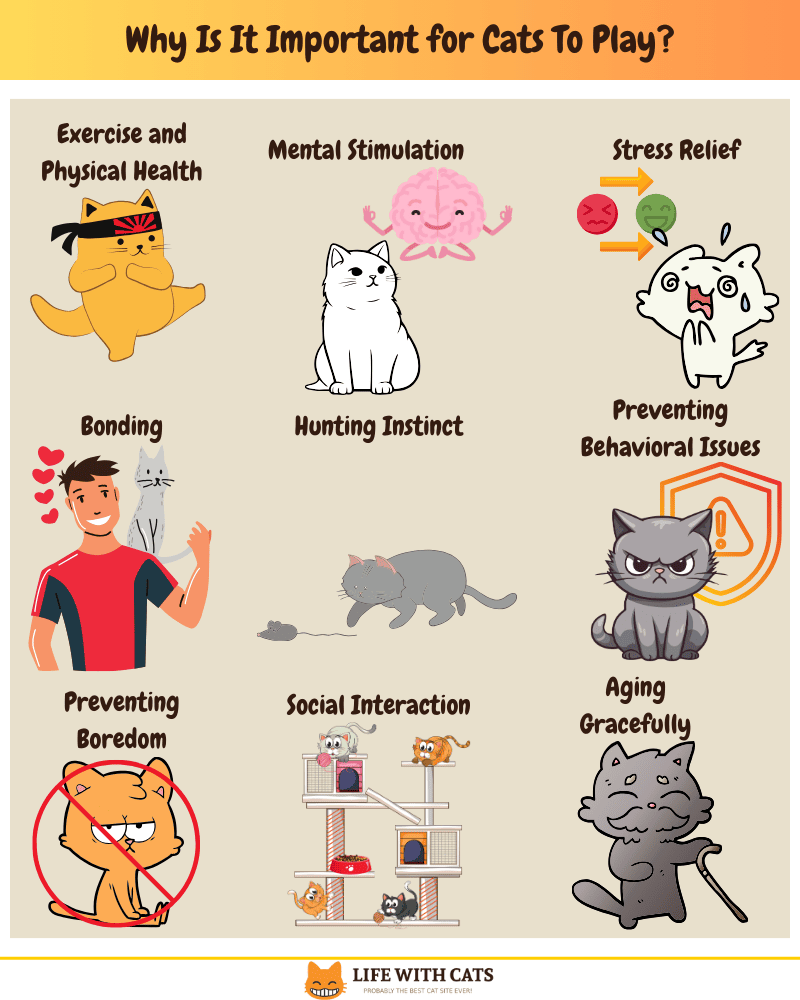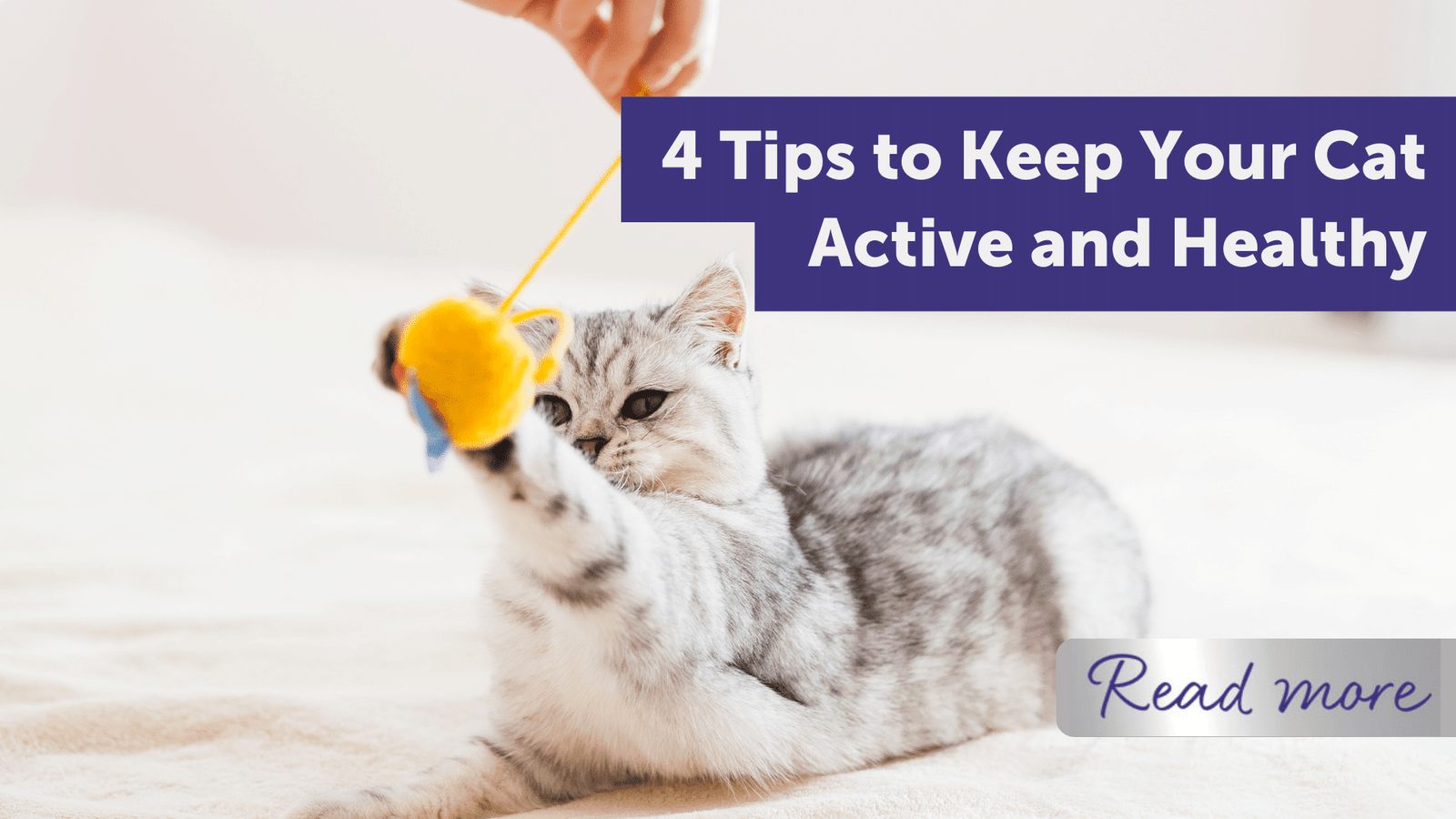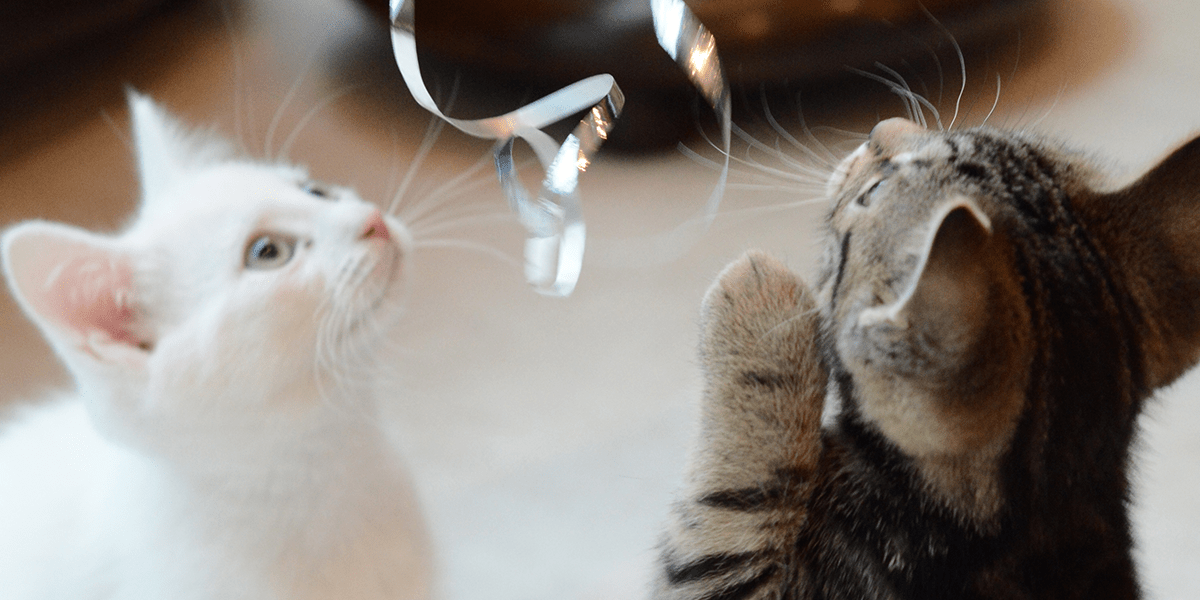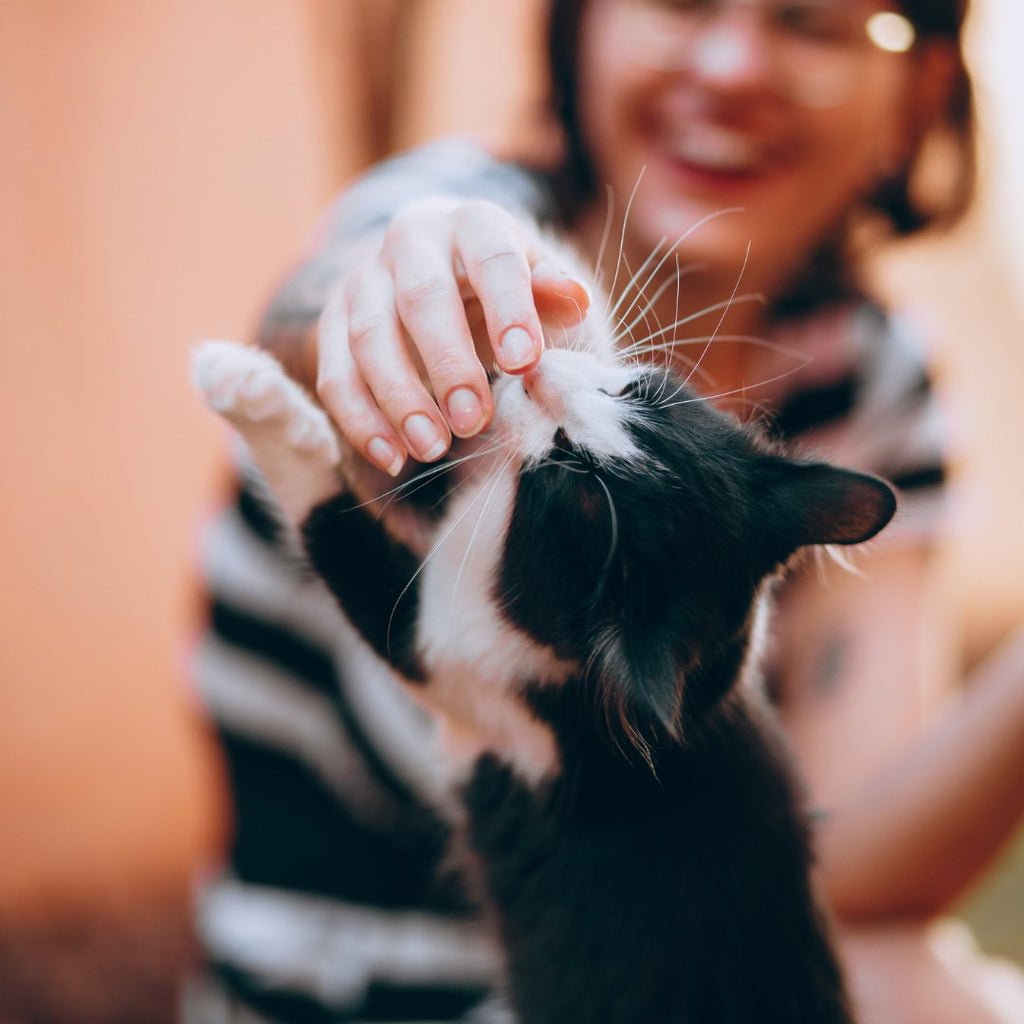If you’ve ever owned a cat, you know how much they enjoy playtime. But did you know that playtime is not just a source of entertainment for your furry friend; it is also crucial for their overall well-being? Playtime for cats is essential in keeping them active and happy. Engaging in play stimulates their natural hunting instincts, helps maintain a healthy weight, prevents behavior problems, and strengthens the bond between you and your feline companion. So grab a toy and get ready to have some quality playtime with your cat – they’ll love you even more for it!

This image is property of www.catster.com.
Benefits of Playtime for Cats
Physical exercise
Playtime is crucial for cats to engage in physical exercise. Cats are natural hunters, and playtime allows them to mimic their hunting instincts, which helps them stay fit and healthy. Physical exercise through play helps prevent obesity and can improve muscle tone, agility, and coordination in cats. Additionally, regular playtime can enhance cardiovascular health and promote a strong immune system.
Mental stimulation
Playtime not only provides physical exercise but also offers mental stimulation for cats. Interactive play helps keep their minds sharp and prevents boredom. Engaging in games that encourage problem-solving and predatory behaviors can enhance their cognitive abilities. Mental stimulation is particularly important for indoor cats who may not have access to the same environmental stimuli as their outdoor counterparts.
Social interaction
Playtime is an excellent opportunity for cats to socialize with their owners and other pets in the household. It helps build a bond between you and your cat, strengthening your relationship. Cats are social animals and benefit from positive interactions. Regular play sessions allow your cat to feel loved, secure, and included as an integral part of the family.
Reduces stress and anxiety
Playtime serves as an effective stress reducer for cats. Engaging in playful activities helps alleviate anxiety and provides an outlet for pent-up energy. Regular playtime can help prevent behavioral problems such as aggression or destructive behavior that may arise from stress or boredom. It promotes relaxation, boosts mood, and creates a sense of calm and contentment in your feline friend.
Types of Playtime Activities
Interactive play with toys
Interactive play with toys is an excellent way to keep your cat engaged physically and mentally. Use toys such as feather wands, laser pointers, or interactive catnip toys to stimulate your cat’s hunting instincts. This type of play allows your cat to pounce, chase, and bat at the toys, providing an outlet for their natural predatory behaviors.
Chasing and hunting games
Chasing and hunting games are ideal for fulfilling your cat’s innate hunting instincts. Use small toys, such as toy mice or balls, and playfully toss them for your cat to chase. You can also hide toys around the house for your cat to find, mimicking the thrill of hunting prey. These games provide mental stimulation and physical exercise for your cat.
Puzzle toys and treat dispensers
Puzzle toys and treat dispensers are a great way to keep your cat mentally stimulated during playtime. These toys require your cat to solve a puzzle or manipulate objects to access treats or kibble. By engaging in treat-seeking activities, your cat exercises their problem-solving skills and stays entertained for extended periods.
Scratching posts and climbing trees
Incorporating scratching posts and climbing trees into your cat’s playtime routine can satisfy their natural instinct to climb and scratch. Scratching posts provide enrichment and help keep your cat’s claws healthy. Cat trees or climbing towers offer vertical spaces for your cat to explore, providing exercise and mental stimulation.
Choosing the Right Toys
Consider your cat’s preferences
When selecting toys for your cat, consider their individual preferences and personality. Some cats may prefer toys that mimic birds or small prey, while others may enjoy toys with bells or crinkle sounds. Observe your cat’s reactions to different types of toys and choose those that evoke the most enthusiasm and excitement.
Size and safety of toys
Ensure that the toys you select are appropriate for your cat’s size and age. Small parts or toys that can be easily swallowed pose a choking hazard. Choose toys that are designed specifically for cats and made with safe materials.
Variety of textures and sounds
Provide your cat with toys that offer a variety of textures and sounds. This variety adds sensory stimulation during playtime. Some cats may enjoy toys with soft, plush textures, while others may prefer toys with crinkle or squeaky sounds. Having a range of toys with different textures and sounds keeps playtime engaging and interesting for your cat.
Durability of toys
Cats can be rough players, so it’s essential to choose toys that are durable and can withstand their playfulness. Opt for toys made from sturdy materials that won’t easily break or tear. Regularly inspect your cat’s toys for any signs of wear or damage, and replace them as needed to ensure their safety during playtime.
Create a Playful Environment
Designate a play area
Designating a specific area in your home as a play zone can help create a playful environment for your cat. This area should be spacious enough for your cat to move around comfortably and engage in various activities. Set up scratching posts, climbing structures, and interactive toys within this play zone to encourage playfulness.
Provide hiding spots
Cats enjoy hiding and pouncing on unsuspecting prey. Provide hiding spots such as cardboard boxes, tunnels, or cozy cat beds for your cat to explore and feel safe while playing. Hiding spots create opportunities for your cat to engage in play initiations and simulate hunting behaviors.
Use vertical spaces
Cats love to climb and explore vertical spaces. Install cat shelves, perches, or a multi-level cat tree to provide your cat with opportunities to be up high. Vertical spaces not only promote exercise but also give cats a sense of security and allow them to observe their surroundings from a different perspective.
Rotate and refresh toys
To keep playtime interesting, regularly rotate and refresh your cat’s toys. Introduce new toys while temporarily removing others to prevent boredom. By rotating toys, you can maintain your cat’s interest and excitement during playtime and ensure they are continually engaged.

This image is property of www.lifewithcats.tv.
Incorporating Playtime into Daily Routine
Set aside dedicated play sessions
Make playtime a part of your cat’s daily routine by scheduling dedicated play sessions. Set aside specific times each day to engage with your cat, ensuring they receive regular and consistent playtime. Make these play sessions a priority to promote your cat’s wellbeing.
Include playtime during transitions
Incorporate playtime during transitional moments of the day, such as before feeding or when returning home. This helps redirect your cat’s energy and provides a positive outlet for excitement or anticipation. By incorporating playtime during transitions, you can effectively manage your cat’s energy levels and promote a calm and balanced demeanor.
Use mealtime as an opportunity for play
Use interactive feeding toys or puzzle feeders during your cat’s mealtime to turn it into a playful activity. This stimulates your cat’s natural hunting instincts and provides mental stimulation while they work to access their food. Incorporating play into mealtime adds an extra element of fun and engagement to your cat’s daily routine.
Engage with your cat during playtime
During playtime, actively engage with your cat by tossing toys, mimicking prey movements, or using interactive toys. Your involvement in playtime strengthens the bond between you and your cat and makes the experience more enjoyable for both of you. Use positive reinforcement, such as praise or treats, to reward your cat’s participation and to further enhance the bond.
Tips for Successful Playtime
Observe your cat’s energy levels
Pay attention to your cat’s energy levels during playtime. Some cats may have bursts of energy and enjoy high-intensity play, while others may prefer more calm and gentle activities. Tailor the playtime activities to your cat’s energy level to provide an enjoyable and suitable experience.
Engage in interactive play
Interactive play involves actively engaging with your cat using toys or your own movements. Cats enjoy the feeling of being actively involved in play, and interactive play helps strengthen your bond with your cat. Experiment with different types of interactive toys and play styles to find what your cat enjoys the most.
Use positive reinforcement
Positive reinforcement is an effective way to motivate and reward your cat during playtime. Offer verbal praise, gentle petting, or small treats when your cat exhibits desired behaviors during play. This positive feedback encourages your cat to continue engaging in play and increases the likelihood of successful play sessions.
Avoid overstimulation
While playtime is essential, it’s crucial to avoid overstimulating your cat. Watch for signs of fatigue or disinterest and give your cat breaks when needed. Overstimulation can lead to frustration or aggression. Pay attention to your cat’s body language and adjust playtime accordingly to maintain a positive and enjoyable experience.

This image is property of www.feliway.co.uk.
Playtime for Indoor Cats
Importance of play for indoor cats
Playtime is especially crucial for indoor cats who have limited opportunities to engage in natural behaviors. Providing regular playtime for indoor cats helps prevent boredom, promotes exercise, and enriches their environment. By engaging in playful activities, indoor cats can release pent-up energy and stay mentally stimulated.
Creating stimulating indoor environments
Create a stimulating indoor environment for your cat by incorporating various toys, scratching posts, and hiding spots throughout your home. Offer different types of surfaces for scratching, provide vertical spaces for climbing, and set up interactive toys that promote problem-solving. This way, your indoor cat can engage in a variety of activities and maximize their playtime experience.
Indoor playtime ideas
Indoor playtime for cats can include a range of activities. Use wand toys to mimic the movement of birds, play hide-and-seek using toys or treats, or create an obstacle course using tunnels and cardboard boxes. Encourage your cat to explore and play in different areas of your home, providing a diverse and engaging play environment.
Compensating for limited exercise
Since indoor cats have limited opportunities for exercise compared to outdoor cats, it’s essential to compensate with increased playtime. Engage your indoor cat in daily play sessions that provide both physical exercise and mental stimulation. By offering opportunities for play, you can help prevent obesity, maintain muscle tone, and keep your indoor cat healthy and happy.
Playtime for Outdoor Cats
Outdoor play benefits for cats
Outdoor playtime offers numerous benefits for cats. It allows them to explore their surroundings, engage in natural behaviors such as hunting and climbing, and experience sensory stimulation from the environment. Outdoor play can provide a more varied and enriching experience for cats compared to indoor play.
Supervising outdoor playtime
When letting your cat enjoy outdoor playtime, it’s crucial to supervise them to ensure their safety. Keep an eye on your cat to prevent encounters with dangerous wildlife, exposure to toxins, or accidents. Consider using a safely enclosed outdoor space or a harness and leash to give your cat controlled access to the outdoors.
Introducing outdoor play gradually
If you want to introduce your cat to the outdoors, especially if they have been strictly indoor cats, do so gradually. Start by allowing supervised outdoor access for short periods, gradually increasing the duration as your cat becomes more accustomed. Ensure your cat is comfortable with outdoor play and familiarize them with potential hazards.
Ensuring safety and preventing risks
While outdoor play offers benefits, it’s essential to take precautions to ensure your cat’s safety and prevent risks. Make sure your cat is up to date on vaccinations and parasite prevention. Provide identification, such as a microchip or collar with tags, in case your cat becomes lost. Regularly check your outdoor play area for potential hazards and remove any toxic plants or substances.

This image is property of icatcare.org.
Playtime for Senior Cats
Adapting playtime for senior cats
As cats age, their playtime needs may change. It’s important to adapt playtime activities to accommodate any physical limitations or reduced energy levels that come with aging. Opt for gentle and low-impact activities that provide mental stimulation without putting too much strain on your senior cat’s joints or muscles.
Choosing appropriate toys and activities
Select toys and activities that cater to your senior cat’s needs. Soft toys that are easy to grip or toys with catnip can be particularly appealing. Puzzle toys that encourage problem-solving but are not overly challenging can also be suitable. Additionally, provide your senior cat with comfortable resting spots nearby to take breaks during playtime.
Understanding limitations and preferences
Each senior cat is unique, so it’s vital to understand and respect their individual limitations and preferences. Some senior cats may prefer shorter play sessions, while others may have specific preferences for certain types of toys or activities. Observe your cat’s behavior and adjust playtime accordingly to ensure their enjoyment and comfort.
Monitoring signs of discomfort or fatigue
Pay close attention to your senior cat’s body language during playtime. Watch for signs of discomfort, such as limping, panting, or reluctance to continue playing. If your senior cat displays signs of fatigue or seems overly tired, allow them to rest and reduce the duration or intensity of playtime. Regularly consult with your veterinarian to address any age-related concerns or health conditions that may affect playtime.
Conclusion
Playtime is a vital aspect of your cat’s life, providing numerous benefits for their physical and mental wellbeing. By incorporating playtime into your cat’s daily routine, you can keep them active, happy, and healthy. Remember to choose the right toys for your cat’s preferences, create a playful environment, and engage in interactive play with them. Whether you have an indoor or outdoor cat, a senior cat or a playful kitten, regular playtime contributes to a healthier and happier feline companion. So, make playtime a priority and enjoy the bonding experience while enhancing your cat’s quality of life.

This image is property of higooga.com.

